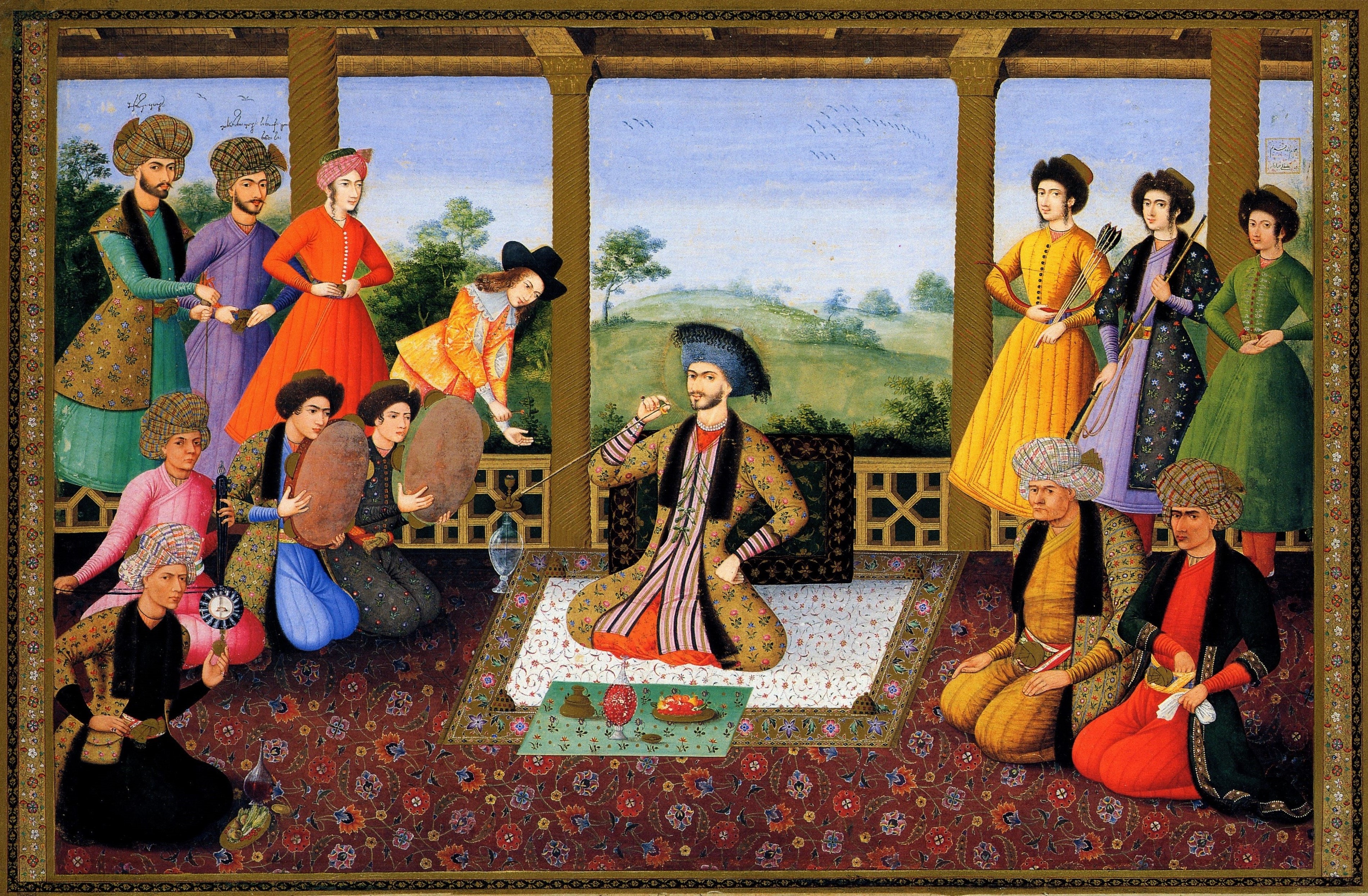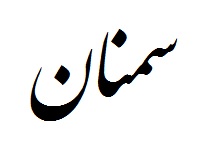|
Mohammad Beg
Mohammad Beg ( fa, محمد بیگ; died 1672), was a Muslim of Armenian origin, who served as the Grand Vizier of the Safavid king (''shah'') Abbas II (r. 1642–1666) from 1654 to 1661. Origins Mohammad Beg was born in Tabriz to an Armenian family, which originally served as a '' ghulām'' ("military slave") of the Safavid dynasty of Iran, but later became tailors. Mohammad Beg's father was Husayn Beg Tabrizi, who served as the court master tailor ('' qaychachi-bashi'') during the reign of Shah Safi (r. 1629–1642). Biography Mohammad Beg is first mentioned in 1643, when he was appointed as the city prefect of New Julfa, a quarter in the Safavid capital of Isfahan, which was populated by Armenians. During this period, Mohammad Beg was supported by another officer of Armenian origin named Allahverdi Khan (not be confused with the powerful military officer Allahverdi Khan, who was of Georgian origin). In 1646, Mohammad Beg was appointed as the port-master/harbourmaste ... [...More Info...] [...Related Items...] OR: [Wikipedia] [Google] [Baidu] |
Muslim
Muslims ( ar, المسلمون, , ) are people who adhere to Islam, a monotheistic religion belonging to the Abrahamic tradition. They consider the Quran, the foundational religious text of Islam, to be the verbatim word of the God of Abraham (or '' Allah'') as it was revealed to Muhammad, the main Islamic prophet. The majority of Muslims also follow the teachings and practices of Muhammad ('' sunnah'') as recorded in traditional accounts (''hadith''). With an estimated population of almost 1.9 billion followers as of 2020 year estimation, Muslims comprise more than 24.9% of the world's total population. In descending order, the percentage of people who identify as Muslims on each continental landmass stands at: 45% of Africa, 25% of Asia and Oceania (collectively), 6% of Europe, and 1% of the Americas. Additionally, in subdivided geographical regions, the figure stands at: 91% of the Middle East–North Africa, 90% of Central Asia, 65% of the Caucasus, 42% of Southeast As ... [...More Info...] [...Related Items...] OR: [Wikipedia] [Google] [Baidu] |
Georgians In Iran
Iranian Georgians or Persian Georgians ( ka, ირანის ქართველები; fa, گرجیهای ایران) are Iranian citizens who are ethnically Georgian, and are an ethnic group living in Iran. Today's Georgia was subject to Iran in the ancient times under the Achaemenid and Sassanian empires and from the 16th century till the early 19th century, starting with the Safavids in power and later Qajars. Shah Abbas I, his predecessors, and successors, relocated by force hundreds of thousands of Christian, and Jewish Georgians as part of his programs to reduce the power of the Qizilbash, develop industrial economy, strengthen the military, and populate newly built towns in various places in Iran including the provinces of Isfahan, Mazandaran and Khuzestan. A certain number of these, among them members of the nobility, also migrated voluntarily over the centuries, as well as some that moved as muhajirs in the 19th century to Iran, following the Russian conqu ... [...More Info...] [...Related Items...] OR: [Wikipedia] [Google] [Baidu] |
French People
The French people (french: Français) are an ethnic group and nation primarily located in Western Europe that share a common French culture, history, and language, identified with the country of France. The French people, especially the native speakers of langues d'oïl from northern and central France, are primarily the descendants of Gauls (including the Belgae) and Romans (or Gallo-Romans, western European Celtic and Italic peoples), as well as Germanic peoples such as the Franks, the Visigoths, the Suebi and the Burgundians who settled in Gaul from east of the Rhine after the fall of the Roman Empire, as well as various later waves of lower-level irregular migration that have continued to the present day. The Norse also settled in Normandy in the 10th century and contributed significantly to the ancestry of the Normans. Furthermore, regional ethnic minorities also exist within France that have distinct lineages, languages and cultures such as Bretons in Brittany, Occi ... [...More Info...] [...Related Items...] OR: [Wikipedia] [Google] [Baidu] |
Suleiman I Of Persia
Suleiman I (; born Sam Mirza, February or March 1648 – 29 July 1694) was the eighth and the penultimate Shah of Safavid Iran from 1666 to 1694. He was the eldest son of Abbas II and his concubine, Nakihat Khanum. Born as Sam Mirza, Suleiman spent his childhood in the harem among women and eunuchs and his existence was hidden from the public. When Abbas II died in 1666, his grand vizier, Mirza Mohammad Karaki, did not know that the shah had a son. The nineteen-years-old Sam Mirza was crowned king under the regnal name, Safi II, after his grandfather, Safi I. His reign as Safi II undergone troublesome events which led to a second coronation being held for him in 20 March 1668, simultaneously with Nowruz, in which he was crowned king as Suleiman I. After his second coronation, Suleiman retreated into his harem to enjoy sexual activities and excessive drinking. He was indifferent to the state affairs, and often would not appear in the public for months. As a result for his idlene ... [...More Info...] [...Related Items...] OR: [Wikipedia] [Google] [Baidu] |
Kerman
Kerman ( fa, كرمان, Kermân ; also romanization of Persian, romanized as Kermun and Karmana), known in ancient times as the satrapy of Carmania, is the capital city of Kerman Province, Iran. At the 2011 census, its population was 821,394, in 221,389 households, making it the 10th most populous city of Iran. It is the largest and most developed city in Kerman Province and one of the most important cities in the southeast of Iran. It is also one of the largest cities of Iran in terms of area. Kerman is famous for its long history and strong cultural heritage. The city is home to many historic mosques and Zoroastrian fire temples. Kerman became the capital city of Iranian dynasties several times during its history. It is located on a large, flat plain, 800 km (500 mi) south-east of Tehran, the capital of Iran. History Kerman was founded as a defensive outpost, with the name Veh-Ardashir, by Ardashir I, founder of the Sasanian Empire, in the 3rd century AD. After th ... [...More Info...] [...Related Items...] OR: [Wikipedia] [Google] [Baidu] |
Semnan, Iran
Semnan (Persian: , ); is the capital city of Semnan Province, situated on the alluvial fan of the Golrudbar creek in north central Iran, 216 km east of Tehran and 640 km west of Mashhad. With a population of 185,129 people, Semnan is the most populated city in Semnan Province and serves as the capital of it. The city is also the hub of the Semnani language, a sub-branch of the Iranian languages spoken to the north, and home to the Semnani ethnic group. Semnan offers various recreational activities, historical and religious sites, festivals, gardens and parks, centers of higher education, and Semnani culture. The city is as the cultural and political capital of the Semnan Province. The city's main souvenirs are daffodil flowers, Shirmal pastry, Kolüçe cookies, kilim rugs, and shortbread. Etymology There are several theories which seek to explain the origin of the name ''Semnan''. Semnan was an ancient pre-zoroastrian city in which the locals practiced idol-worsh ... [...More Info...] [...Related Items...] OR: [Wikipedia] [Google] [Baidu] |
Ardabil
Ardabil (, fa, اردبیل, Ardabīl or ''Ardebīl'') is a city in northwestern Iran, and the capital of Ardabil Province. As of the 2022 census, Ardabil's population was 588,000. The dominant majority in the city are ethnic Iranian Azerbaijanis and the primary language of the people is Azerbaijani. Ardabil is known for its trade in silk and carpets. Ardabil rugs are renowned and the ancient Ardabil carpets are considered among the best of classical Persian carpets. Ardabil is also home to a World Heritage Site, the Ardabil Shrine, the sanctuary and tomb of Shaikh Safî ad-Dîn, eponymous founder of the Safavid dynasty. The population of Ardabil is about 650,000 with the majority of them being Shia Muslims. Etymology The name Ardabil comes from the Avestan ''artavil'' or ''artawila'' which means "holy place". Location Ardabil is located on the Baliqly Chay River, about from the Caspian Sea, and from the city of Tabriz. It has an average altitude of and total ar ... [...More Info...] [...Related Items...] OR: [Wikipedia] [Google] [Baidu] |
Hamadan
Hamadan () or Hamedan ( fa, همدان, ''Hamedān'') ( Old Persian: Haŋgmetana, Ecbatana) is the capital city of Hamadan Province of Iran. At the 2019 census, its population was 783,300 in 230,775 families. The majority of people living in Hamadan identify as ethnic Persians. Hamedan is believed to be among the oldest Iranian cities. It is possible that it was occupied by the Assyrians in 1100 BCE; the Ancient Greek historian, Herodotus, states that it was the capital of the Medes, around 700 BCE. Hamedan has a green mountainous area in the foothills of the 3,574-meter Alvand Mountain, in the midwest part of Iran. The city is 1,850 meters Above mean sea level, above sea level. The highly cultural nature of this old city and its historic sites attract tourists during the summer to this city, located approximately southwest of Tehran. The major sights of this city are the Ganj Nameh inscription, the Avicenna monument and the Baba Taher monument. The main language in the city ... [...More Info...] [...Related Items...] OR: [Wikipedia] [Google] [Baidu] |
Parsadan Gorgijanidze
P'arsadan Gorgijanidze ( ka, ფარსადან გორგიჯანიძე; or Giorgijanidze, გიორგიჯანიძე) (1626 – ) was a Georgian factotum and historian in the service of the Safavids. Early in his career he served at the residence of the viceroy ('' vali'') of Kartli, and later at the Safavid court in Isfahan. He is principally known for his informative chronicles ''The History of Georgia'' (საქართველოს ისტორია, ''sak’art’velos istoria''). Career Born in the town of Gori, Gorgijanidze was brought up at the local court of the Safavid viceroy (''vali'') of Kartli, Rostom (Rostam), in Tbilisi. He engaged in Georgian-Iranian diplomacy early in his career. In 1656, he was appointed, through the recommendation of Rostom, as a ''darugha'' (prefect) of the Safavid capital, Isfahan. Gorgijanidze converted to Islam on the occasion, entered the ''gholam'' corps, and was to spend four decades in the service of ... [...More Info...] [...Related Items...] OR: [Wikipedia] [Google] [Baidu] |
Mohammad Ali Beg
Muhammad ( ar, مُحَمَّد; 570 – 8 June 632 CE) was an Arab religious, social, and political leader and the founder of Islam. According to Islamic doctrine, he was a prophet divinely inspired to preach and confirm the monotheistic teachings of Adam, Abraham, Moses, Jesus, and other prophets. He is believed to be the Seal of the Prophets within Islam. Muhammad united Arabia into a single Muslim polity, with the Quran as well as his teachings and practices forming the basis of Islamic religious belief. Muhammad was born approximately 570CE in Mecca. He was the son of Abdullah ibn Abd al-Muttalib and Amina bint Wahb. His father Abdullah was the son of Quraysh tribal leader Abd al-Muttalib ibn Hashim, and he died a few months before Muhammad's birth. His mother Amina died when he was six, leaving Muhammad an orphan. He was raised under the care of his grandfather, Abd al-Muttalib, and paternal uncle, Abu Talib. In later years, he would periodically seclu ... [...More Info...] [...Related Items...] OR: [Wikipedia] [Google] [Baidu] |





